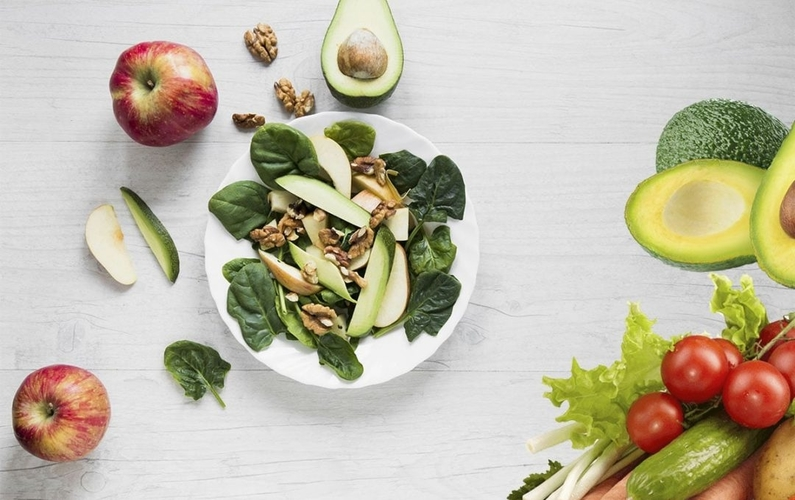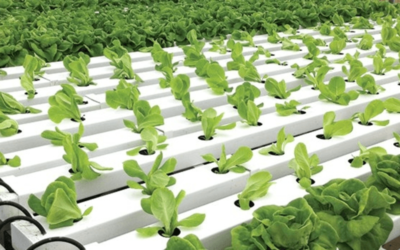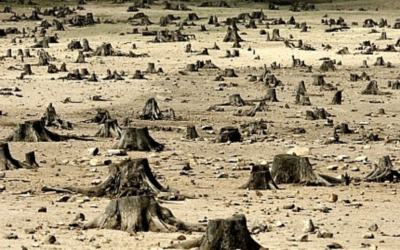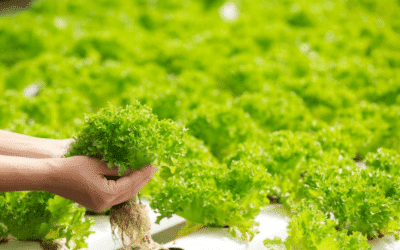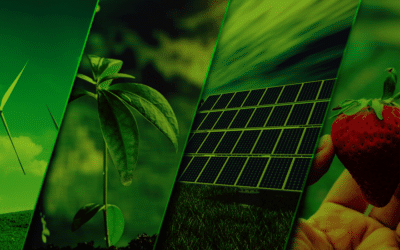What I Eat In A Day | Healthy Vegan Recipes
I follow a plant-based diet and I don’t eat gluten or processed sugars.
When observing the current environmental and physical condition of planet earth, we get a feeling that something is wrong somewhere. Planet earth is taking strain. A further observation is, some cause harm to the environment whereas others take steps to save it? Eating vegan addresses this in addition to the personal preferences of such a lifestyle.
The answer lies somewhere in our eating habits and the diet we take. Remember the old saying, You Are What You Eat. If the bigger portion of our diet is bad food (such as fast foods), as explored here: 12 Weird Effects Fast Food Has on the Brain, this, in turn, leads to further anomalies such as harming ourselves and the environment.
Is Eating Vegan Healthy?
Is Eating FullyRaw Vegan Healthy? What’s the difference between eating FullyRaw and vegan? This video addresses the common myths that we face when we approach this lifestyle. Is it actually healthy?
The Vegan Diet
A type of diet that is above reproach and positively impacts the environment is the Vegan diet. All the food products in this diet are derived only from plants and fruit. All those eating vegan cut out all animal products, even eggs, honey, dairy, and gelatin.
The biggest followers of a vegan diet are those subscribing to an eco-lifestyle. Soaps, clothes, or other items sourced from animals are avoided.
Many say that animal products are vital and an easily accessible source of vitamins, protein, minerals, iron, and non-saturated fats. A shift towards eating vegan means searching for alternatives. But this small lifestyle change prevents cruelty towards animals, resolves environmental concerns and results in a healthier life.
Different Eating Habits and Diets
As you know, unsurprisingly, different eating habits and diets exist all over the world – on the basis of different preferences, regions, religions, beliefs, facts, habits, needs, etc. Some of the major eating habits and diets from different parts of the world are as follows:
Vegetarian Diet: A vegetarian diet is the one that excludes meat. The followers of a vegetarian diet eliminate food containing animal products. A vegetarian diet is further divided into five categories. They are:
-
Fruitarian Diet: This diet is mostly made up of raw fruit.
-
Lacto Vegetarianism: This kind of diet includes some dairy products, excludes eggs and excludes foods containing animal rennet.
-
Ovo-Vegetarianism: This vegetarian diet includes eggs but does not include dairy products.
-
Ovo-Lacto Vegetarianism: This vegetarian diet includes both dairy products and eggs.
-
Vegan Diet: Eating vegan is a true vegetarian diet. It does not include any product coming from animals.
Semi-vegetarian Diet: This diet is predominantly vegetarian and meat is consumed occasionally. A semi-vegetarian diet is also classified into the following five categories:
-
Kangatarian: This diet originated in Australia and in this diet, kangaroo meat along with a vegetarian diet is consumed.
-
Pescetarian Diet: This diet includes fish and no other meat.
-
Plant-based Diet: Some definitions say that a plant-based diet is completely vegetarian whereas others say that this diet includes occasional consumption of meat.
-
Pollotarian: This diet includes chicken and other poultry but excludes the meat of mammals, mostly for health, environmental, and food justice reasons.
-
Pollo-pescetarian: This diet includes both poultry and seafood/fish, but not the meat of mammals.
Weight Control Diets: When someone wants to lose weight, the first thing we do is make changes in our dietary habits. While weight control diets are considered effective, health risks associated with them aren’t ruled out. Some of the major weight control diets are:
-
Low-calorie Diets: Sometimes a low-calorie diet is also called the starvation diet. This diet includes a low level of food consumption.
-
Very low-calorie Diet: A very low-calorie diet often contains 800 Kilocalories per day or less. These diets are usually followed under a doctor’s supervision.
-
Low-carbohydrate Diets: A low-carb diet is consumed to decrease weight but it is said that a low-carbohydrate diet invokes health risks.
-
Low-fat Diets: A low-fat diet includes high fiber, high calorie, and low fat. This diet excludes added vegetable oils and all animal products.
Crash Diets: Crash diets are diet plans involving rapid and extreme changes to food consumption. A crash diet promises rapid weight loss and various health advantages and includes unusual or restrictive food choices.
Detox Diets: A detox diet involves the consumption of food items which have the ability to flush out harmful or unhelpful substances from the body. These diets include consumption of food without preservatives or colors, taking supplements, and drinking lots of water.
Belief-based Diets: The dietary choices of some are based on their spiritual, philosophical or religious beliefs. Some examples of belief-based diets are Buddhist diets, Jain or Hindu diets, Islamic dietary laws, Kosher diet, etc.
Diets based on Medical Reasons: Sometimes, dietary choices are affected by certain kinds of allergies or intolerance. The diets based on medical reasons include dietary patterns prescribed, recommended or administered by a doctor or medical professional. Some examples are a Diabetic diet, DASH (Dietary Approaches to Stop Hypertension) diet, Elemental diet, Elimination diet, Gluten-free diet, Liquid diet, Ketogenic diet, etc.
Other Diets: There are numerous other diets on the basis of need, circumstances, and beliefs. For example, Alkaline diet, Blood-type diet, Clean diet, Fit for Life diet, Food combining diet, Low-protein diet, Low-sodium diet, and many more.
Besides these diets, some of us, when experiencing the consequences of unhealthy eating habits, would benefit by following The Top Ten Healthy Eating Habits.
Benefits of Eating Vegan
It is fair to say that every diet has some pros and cons associated with it. Eating Vegan is the only diet that has maximum positive effects on humans, for animals and the complete ecosystem. Here are some major benefits:
A Vegan diet is rich in some specific kinds of nutrients. When we start consuming a Vegan diet instead of our usual diet, we start consuming a lot of whole grains, vegetables, fruit, peas, beans, seeds, and nuts. With the consumption of these foods, our daily intake of various beneficial nutrients also increases. Eating Vegan provides more antioxidants, fiber, and fruitful plant compounds.
The World Health Organization says that around one-third of the cancers may be restrained by the factors in our control, inclusive of diet. Vegans usually eat more legumes, vegetables, and fruit as compared to non-vegans. This helps in reducing risks related to cancer. For example, when someone starts consuming legumes on a regular basis, the risk of colorectal cancer is reduced by around 9-18%.
A Vegan diet helps in lowering the levels of blood sugar and improves kidney function. The Vegan diet helps in reducing the levels of blood sugar in diabetic patients. When we start following a Vegan diet, we usually substitute meat for plant proteins and this reduces the risk of improper kidney function.
A Vegan diet helps us lose extra weight. Various observational studies have revealed that vegans are usually thinner and have low BMI (Body Mass Index) in comparison to non-vegans. Moreover, amongst all the diets, a Vegan diet is more effective when it comes to weight loss.
A Vegan diet including more quantities of vegetables, fruit, and legumes reduces the risk of heart disease. It is seen that Vegan diets effectively reduce blood sugar levels, and the levels of LDL cholesterol as well as total cholesterol. This is particularly beneficial for the health of the heart because it reduces high blood pressure, blood sugar, and cholesterol.
A Vegan diet also reduces Arthritis pain. Those suffering from arthritis pain have reported that we experienced a reduction in pain after shifting to Eating Vegan. This diet enhances energy levels which further improves the functioning of the human body.
The Negative Effects of Not Eating Vegan
According to research conducted at the University of Oxford, when we cut dairy and meat products from our diet, we succeed in reducing our carbon footprint by nearly 73 percent. When this study is explored in Reducing food’s environmental impacts through producers and consumers, we find that this is one of the most comprehensive studies done to date, including the data from over 40,000 farms across 119 countries.
Other research from the University of Oxford found that diets rich in meat – and when consuming more than 100g every day – result in a 7.2 kg emission of carbon dioxide. Vegan diets produce only a 2.9 kg emission. Thus, Eating Vegan results in far less carbon dioxide emission.
How Eating Vegan is a Healthy Activity and Reduces Carbon Footprint
Eating Vegan is a lifestyle choice which is healthy, as well as benefiting the environment greatly. Not only are we healthy, planet earth is also healthy. When grains are grown for livestock, a lot of water and other natural resources are required. The production of these grains creates carbon emission but when we consume a vegan diet, our carbon footprint is reduced.
Here are some ways how eating vegan reduces the carbon footprint:
-
The consumption of a Vegan diet reduces the emission of greenhouse gases. The production of livestock causes more than 14.5% of the total greenhouse gas emission. Lamb and beef are responsible for maximum greenhouse gas emissions. The emission from the production of one gram of lamb or beef is 250 times more than that for legumes.
-
Where we shift to Eating Vegan, lower carbon- producing crops would be demanded instead.
-
When the demand for Vegan diet increases and the demand for livestock decreases, the damage caused to the soil and crops from their grazing also decreases. Again, it means that healthier land is available for cultivating lower carbon producing plants.
-
A huge amount of water is required to raise livestock. When eating Vegan, this plays a major role in saving water. Moreover, crowded farms generate a lot of waste and this waste is stored in big manure lagoons. This pollutes water supplies, kills marine life, and poses a danger to the health of humans.
-
When taking this further, and consuming locally produced fruit and vegetables instead of transporting products from afar, further reduction in the carbon footprint is achieved (from reduced long haul fuel and vehicle costs). Roads are spared too. Traffic congestion is reduced. We’re spending less time on (less) congested roads.
Eating Vegan is not just an eating habit, it is a lifestyle. Individuals choose veganism for personal, environmental, ethical, and health reasons. When consumed in the right manner, a Vegan diet provides several health benefits.
As with every diet, we experience these benefits only when we are consistent and include various nutrient-rich green foods in our diet, instead of processed ones.
LOVE WILD LIVE FREE
#GoVegan for ANIMALS + THE PLANET + YOUR HEALTH
Vegan Social Events’ Sustainable Block Party + Pop-Up Market | July 2018 (Toronto)
VEGANISM is a moral-baseline that describes living from a place of compassion, by excluding all forms of exploitation of, and cruelty towards non-human animals. This includes the use of any non-human living beings for their bodies and their secretions for food, clothing, entertainment, or any other purpose.
Sites that promote Vegan
Vegan Food Ideas and Recipes
Contributing Sources
Carrington, D. (2014). Giving up beef will reduce carbon footprint more than cars, says expert.
Eat More Plants: 5 Ways A Plant-Based Diet Reduces Your Carbon Footprint – Le Pain Quotidien – Bakery & Communal Table.
Fisher, L. 12 Weird Effects Fast Food Has on Your Brain | Reader’s Digest.
Gunnars, K. (2015). 20 Foods That Are Bad For Your Health (Avoid Them!).
Gunnars, K. (2016). 50 Foods That Are Super Healthy.
Nordqvist, C., & Butler, N. (2017). What To Know About Eating Vegan
Petre, A. (2016). 6 Science-Based Health Benefits of Eating Vegan.
Petter, O. (2018). Vegan is ‘single biggest way’ to reduce our impact on the planet, study finds.

